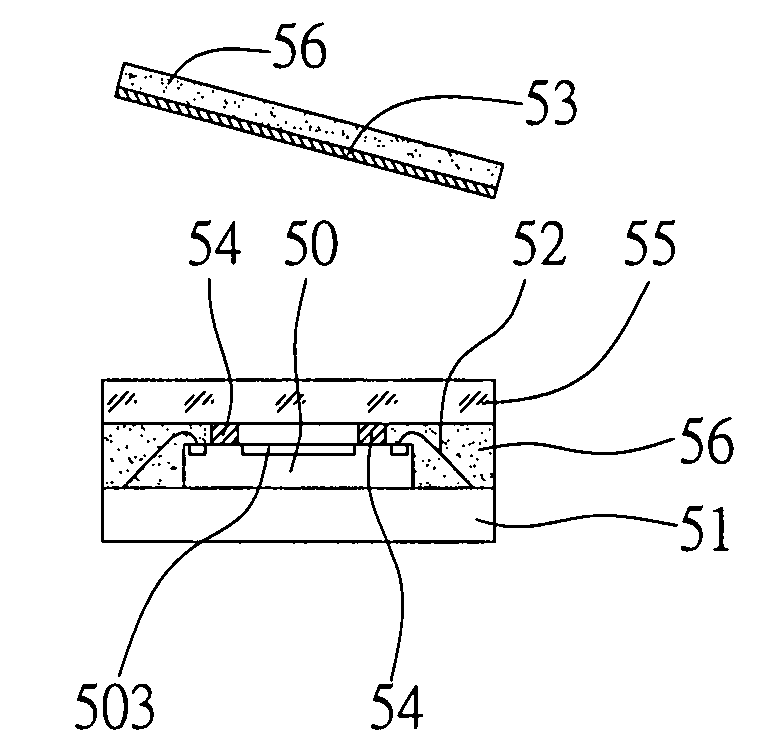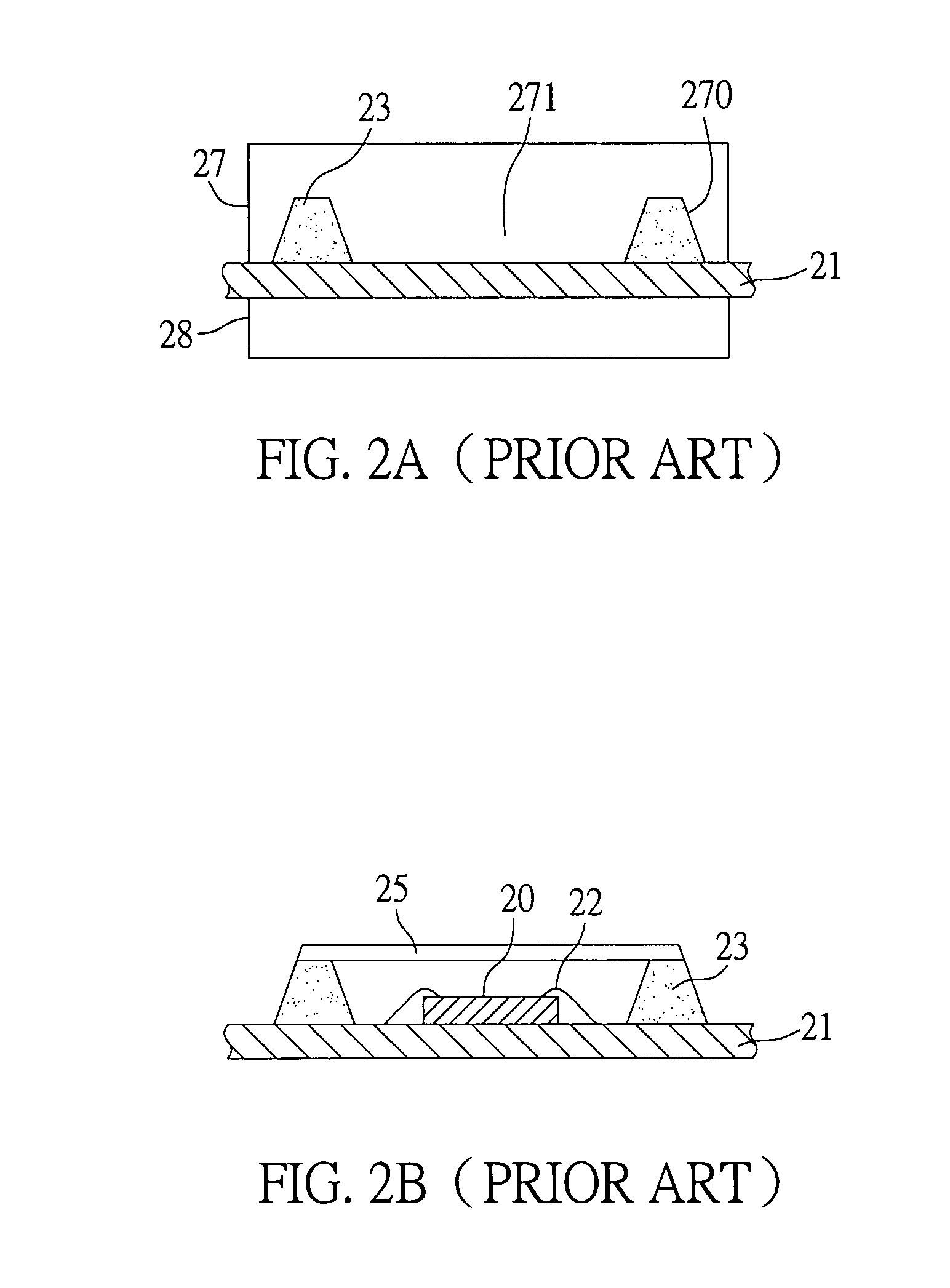Sensor-type package and fabrication method thereof
- Summary
- Abstract
- Description
- Claims
- Application Information
AI Technical Summary
Benefits of technology
Problems solved by technology
Method used
Image
Examples
first embodiment
[0042]FIGS. 5A to 5F are schematic diagrams showing a sensor-type package and a fabrication method thereof according to a first embodiment of the present invention. In this embodiment, the sensor-type package is fabricated in a batch-type manner.
[0043]As shown in FIG. 5A, a substrate module plate 51 A comprising a plurality of substrates 51 is provided, and a sensor-type chip 50 is mounted on each of the substrates 51. A planar size of the sensor-type chip 50 is smaller than a planar size of the substrate 51 that corresponds to a predefined package size. The substrate module plate 51. A may have the plurality of substrates 51 arranged in a matrix or in a strip. The sensor-type chip 50 has an active surface 501 and a non-active surface 502 opposed to the active surface 501, wherein the active surface 501 is formed with a sensor area 503 and a plurality of bonding pads 504 thereon. The non-active surface 502 of the sensor-type chip 50 is attached to the corresponding substrate 51, and...
second embodiment
[0051]FIGS. 6A to 6C are schematic diagrams showing a sensor-type package and a fabrication method thereof according to a second embodiment of the present invention. The second embodiment is similar to the above first embodiment, and differs from the first embodiment primarily in that, when the sensor area is very close to the bonding pads of the sensor-type chip, for example, with a distance therebetween being smaller than 300 μm, the adhesive layer on the second surface of the light-pervious body cannot be disposed between the sensor area and the bonding pads; instead, the adhesive layer is attached to the bonding pads of the sensor-type chip and encapsulates end portions of the bonding wires connected to the sensor-type chip.
[0052]As shown in FIG. 6A, a sensor-type chip 50 is mounted on each of the substrates 51, wherein the sensor-type chip 50 is formed with a sensor area 503 and bonding pads 504 on an active surface thereof. The sensor-type chip 50 is attached via its non-activ...
third embodiment
[0057]FIGS. 7A to 7D are schematic diagrams showing a sensor-type package and a fabrication method thereof according to a third embodiment of the present invention. The third embodiment is similar to the above embodiments, and differs from the above embodiments primarily in that, when the light-pervious body has a size larger than the predefined package size, a cutting path would pass through the light-pervious body, and a bevel cutting technique is employed to form bevel edges on side surfaces of the light-pervious body so as to prevent the light-pervious body (made of such as glass) from cracking during the cutting process.
[0058]As shown in FIGS. 7A and 7B, after mounting the sensor-type chips 50 on the substrates 51, forming the bonding wires 52, and attaching the light-pervious bodies 55 to the sensor-type chips 50, and performing the molding process to form the encapsulant 56 on the substrates 51, a bevel cutting technique is implemented to cut the encapsulant 56, the light-per...
PUM
 Login to View More
Login to View More Abstract
Description
Claims
Application Information
 Login to View More
Login to View More - R&D
- Intellectual Property
- Life Sciences
- Materials
- Tech Scout
- Unparalleled Data Quality
- Higher Quality Content
- 60% Fewer Hallucinations
Browse by: Latest US Patents, China's latest patents, Technical Efficacy Thesaurus, Application Domain, Technology Topic, Popular Technical Reports.
© 2025 PatSnap. All rights reserved.Legal|Privacy policy|Modern Slavery Act Transparency Statement|Sitemap|About US| Contact US: help@patsnap.com



